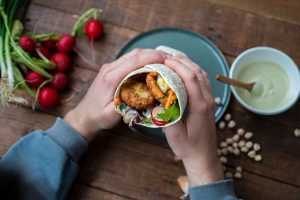Updated on March 13, 2023
You’re not alone if you often toss away rotting fruit, stale bread, and wilted lettuce.
Food waste in the United States is estimated to constitute between 30 percent and 40 percent of the country’s total food supply each year, according to the USDA. Because we’re dumping food in landfills needlessly, this is a double-whammy for our finances.
Those stray items in your cupboard may be put to good use with a little planning. In order to make full use of the contents of your refrigerator and pantry, we turned to the professionals for advice.
Incorporate Leftovers Into Your Meal Plan
Stevenson like eating leftovers while he’s at home, he adds. This is a chance for us to create something even better. For example, the leftover meat from a roasted or smoked chicken may be used to make tacos the following day. Great broth may be made from carcasses. Pho comes to mind as an example. It goes well with the rest of the pork roast you had for dinner the night before. Cooking soups and pasta dishes with the same broth is a cinch.”
Cooking grains like rice or quinoa, or boiling dry or canned beans, are some of Langan’s favorite ways to use up leftover broth or stock. The answer to making canned beans taste like they were made from scratch, according to her, is to use this technique.

If you’ve got a lot of food in your fridge that you don’t know what to use, Langan suggests utilizing pizzas, vegetable soups, grain bowls, tacos, frittatas, and grilled cheese sandwiches as blank canvases.
It’s a good idea to do a quick fridge cleanout before you go shopping, according to Langan. “Make a Fridge Dive Frittata once a week before you head to the grocery shop. Add whatever vegetables you have on hand—the rest of an onion, some wilted spinach, or the last few frozen peas—to an oven-safe pan to cook. Using a small- to medium-sized pan, whip up a batch of six to eight whisked eggs, along with any additional ingredients you may have on hand. For cheese and herbs, this is the spot. 30 to 40 minutes at 350 degrees Fahrenheit until done baking. Breakfast or not, this is a great dish for every meal of the day.
Don’t Throw Away Your Stems
It pains Stevenson when you throw away the lesser parts of vegetables. “One way to get more out of your vegetables and preserve them is to use the entire vegetable,” he says. “One of my favorite things to eat are the stems and stalks of broccoli and romaine. These are wonderful pickled, roasted or simply sauteed. There is no reason to get rid of them ― this is where all the flavor and nutrients are.”
Save Your Stale Bread
While it’s easy to toss out stale bread, you can actually freeze it until you’re ready to utilise it.
There are some excellent suggestions from Langan on how to do this. “Panzanella, commonly known as bread salad, is another versatile dish.” Toast bread (fresh or stale) in the oven by chopping it into little pieces. Toss the salad with your preferred vinaigrette, as well as any extras, such as veggies, cheese, herbs, or cooked protein or beans, if you choose. If you don’t have fresh tomatoes, basil, and mozzarella, use what you have! For a Greek-inspired flavour, I like to include cucumber, dill, feta, and red onion.” More recipes for panzanella salad may be found at this link.
To produce a crispy topping for pasta, salad, and soups, she recommends pulverising remaining bread into pieces and toasting them in a pan with olive oil, garlic, and herbs.
Get Creative With Fruit And Berries
Anyone who has ever bought a banana can attest to the limited shelf life of many items, particularly fruits and berries.
According to Langan, a number of old baking recipes were developed to use up fruit before it expired. Fruits such as apples and pears may be used in a variety of ways, including crumbles, crisps, buckles, and pandowdy. You may also make a fast compote out of fruit that is ready to change by simmering it with sugar, honey, or maple syrup in a skillet until it thickens.”
For smoothies and other dishes, Langan recommends cutting the fruit into 2-inch pieces and placing it on a parchment or waxed paper-lined sheet pan. After that, place the fruit in an airtight container or zip-top bag to keep it fresh. Instead of clumping together, “freezing the fruits this way enables it becoming like a bunch of small ice cubes,” she explains. She also recommends peeling bananas before freezing them, since it might be hard to remove the shells after they’ve been frozen.

